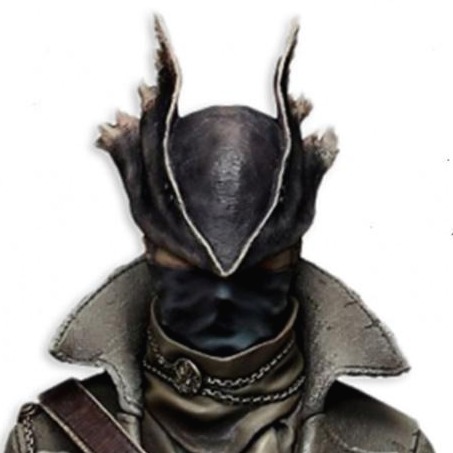Notice
Recent Posts
Recent Comments
Link
yusukaid's IT note
TensorFlow를 이용한 YOLO v1 논문 구현 #8 - evaluate.py 본문
이전 글: https://it-the-hunter.tistory.com/36
TensorFlow를 이용한 YOLO v1 논문 구현 #7 - train.py
이전 글: https://it-the-hunter.tistory.com/34 TensorFlow를 이용한 YOLO v1 논문 구현 #6 - model.py 이전 글: https://it-the-hunter.tistory.com/33 TensorFlow를 이용한 YOLO v1 논문 구현 #5 - utils.py 이..
it-the-hunter.tistory.com
evaluate.py
목표: 학습된 파라미터를 불러와 evaluation을 진행
필요한 모듈, 라이브러리 import
import tensorflow as tf
import tensorflow_datasets as tfds
import numpy as np
import cv2
import os
from absl import flags
from absl import app
from model import YOLOv1
from dataset import process_each_ground_truth
from utils import draw_bounding_box_and_label_info, generate_color, find_max_confidence_bounding_box, yolo_format_to_bounding_box_dict상세 코드
#cat label dictionary 생성
cat_label_to_class_dict = {
0:"cat"
}
cat_class_to_label_dict = {v: k for k, v in cat_label_to_class_dict.items()}필자는 pascal 데이터셋의 cat label을 사용한다. 그렇기 때문에 이를 위한 dictionary를 생성한다.
flags.DEFINE_string('checkpoint_path', default='saved_model', help='path to a directory to restore checkpoint file')
flags.DEFINE_string('test_dir', default='test_result', help='directory which test prediction result saved')
FLAGS = flags.FLAGSflags 로직은 다음과 같다.
- 체크포인트 경로에 'saved_model' 폴더를 생성해 체크포인트 파일을 저장한다.
- test 경로에 'test_result' 폴더를 생성해 예측 결과 이미지들을 삽입한다.
#configuration value 값 설정
batch_size = 1
input_width = 224 # original paper : 448
input_height = 224 # original paper : 448
cell_size = 7
num_classes = 1 # original paper : 20
boxes_per_cell = 2
#그리기에 쓰인 color list
color_list = generate_color(num_classes)
#PASCAL voc 2007
# notice : voc2007 train data(=2,501 images) for test & voc2007 test data(=4,952 images) for training
voc2007_train_split_data = tfds.load("voc/2007", split=tfds.Split.TRAIN, batch_size=1)
test_data = voc2007_train_split_data- configuration 값들은 train.py에서와 동일한 값으로 설정해줘야 한다.
색을 위한 color_list을 생성하고, 학습을 위한 voc 2007 데이터셋을 불러오는 로직이다.
# label 7 : cat
def predicate(x, allowed_labels=tf.constant([7.0])):
label = x['objects']['label']
isallowed = tf.equal(allowed_labels, tf.cast(label, tf.float32))
reduced = tf.reduce_sum(tf.cast(isallowed, tf.float32))
return tf.greater(reduced, tf.constant(0.))
test_data = test_data.filter(predicate)
test_data = test_data.padded_batch(batch_size)voc 2007의 cat label만 parsing해 batch_size만큼 필터링을 하는 함수다.
def reshape_yolo_preds(preds):
# 7x7x(20+5*2) = 1470 -> 7x7x30
return tf.reshape(preds, [tf.shape(preds)[0], cell_size, cell_size, num_classes + 5 * boxes_per_cell])train.py와 마찬가지로 cell_size를 반영해 YOLO 예측값을 reshape해준다.
def main(_):
#만약 체크포인트 경로가 존재하지 않는다면 ...
if not os.path.exists(FLAGS.checkpoint_path):
print('checkpoint file is not exists!')
exit()evaluate.py는 체크포인트 파일로 진행이 된다. 따라서 만약 체크포인트가 경로에 존재하지 않는다면 중단한다는 에러 메세지를 출력해주는 코드다.
#YOLO 모델 생성
YOLOv1_model = YOLOv1(input_height, input_width, cell_size, boxes_per_cell, num_classes)
#체크포인트 manager 생성
ckpt = tf.train.Checkpoint(step=tf.Variable(0), model=YOLOv1_model)
latest_ckpt = tf.train.latest_checkpoint(FLAGS.checkpoint_path)
#가장 마지막 체크포인트 저장
if latest_ckpt:
ckpt.restore(latest_ckpt)
print('global_step : {}, checkpoint is restored!'.format(int(ckpt.step)))
num_images = len(list(test_data)) # batch_size = 1
print('total test image :', num_images)
for image_num, features in enumerate(test_data):
batch_image = features['image']
batch_bbox = features['objects']['bbox']
batch_labels = features['objects']['label']
batch_image = tf.squeeze(batch_image, axis=1)
batch_bbox = tf.squeeze(batch_bbox, axis=1)
batch_labels = tf.squeeze(batch_labels, axis=1)
image, labels, object_num = process_each_ground_truth(batch_image[0], batch_bbox[0], batch_labels[0], input_width, input_height)
drawing_image = image
image = tf.expand_dims(image, axis=0)
predict = YOLOv1_model(image)
predict = reshape_yolo_preds(predict)
predict_boxes = predict[0, :, :, num_classes + boxes_per_cell:]
predict_boxes = tf.reshape(predict_boxes, [cell_size, cell_size, boxes_per_cell, 4])
confidence_boxes = predict[0, :, :, num_classes:num_classes + boxes_per_cell]
confidence_boxes = tf.reshape(confidence_boxes, [cell_size, cell_size, boxes_per_cell, 1])
class_prediction = predict[0, :, :, 0:num_classes]
class_prediction = tf.argmax(class_prediction, axis=2)
bounding_box_info_list = []
for i in range(cell_size):
for j in range(cell_size):
for k in range(boxes_per_cell):
pred_xcenter = predict_boxes[i][j][k][0]
pred_ycenter = predict_boxes[i][j][k][1]
pred_box_w = tf.minimum(input_width * 1.0, tf.maximum(0.0, predict_boxes[i][j][k][2]))
pred_box_h = tf.minimum(input_height * 1.0, tf.maximum(0.0, predict_boxes[i][j][k][3]))
pred_class_name = cat_label_to_class_dict[class_prediction[i][j].numpy()]
pred_confidence = confidence_boxes[i][j][k].numpy()
#bounding box dictionary list 추가
bounding_box_info_list.append(yolo_format_to_bounding_box_dict(pred_xcenter, pred_ycenter, pred_box_w, pred_box_h, pred_class_name, pred_confidence))
#정답 영역 bounding box list 생성
ground_truth_bounding_box_info_list = []
for each_object_num in range(object_num):
labels = np.array(labels)
labels = labels.astype('float32')
label = labels[each_object_num, :]
xcenter = label[0]
ycenter = label[1]
box_w = label[2]
box_h = label[3]
class_label = label[4]
# label 7 : cat
# add ground-turth bounding box dict list
if class_label == 7:
ground_truth_bounding_box_info_list.append(
yolo_format_to_bounding_box_dict(xcenter, ycenter, box_w, box_h, 'cat', 1.0))
ground_truth_drawing_image = drawing_image.copy()
#정답 영역 그리기
for ground_truth_bounding_box_info in ground_truth_bounding_box_info_list:
draw_bounding_box_and_label_info(
ground_truth_drawing_image,
ground_truth_bounding_box_info['left'],
ground_truth_bounding_box_info['top'],
ground_truth_bounding_box_info['right'],
ground_truth_bounding_box_info['bottom'],
ground_truth_bounding_box_info['class_name'],
ground_truth_bounding_box_info['confidence'],
color_list[cat_class_to_label_dict[ground_truth_bounding_box_info['class_name']]]
)
#confidence가 가장 큰 bounding box 찾기
max_confidence_bounding_box = find_max_confidence_bounding_box(bounding_box_info_list)
#예측 값 그리기
draw_bounding_box_and_label_info(
drawing_image,
max_confidence_bounding_box['left'],
max_confidence_bounding_box['top'],
max_confidence_bounding_box['right'],
max_confidence_bounding_box['bottom'],
max_confidence_bounding_box['class_name'],
max_confidence_bounding_box['confidence'],
color_list[cat_class_to_label_dict[max_confidence_bounding_box['class_name']]]
)
#왼: 정답 영역/오: 예측 영역
drawing_image = np.concatenate((ground_truth_drawing_image, drawing_image), axis=1)
#예측 결과를 png file로 저장
if not os.path.exists(os.path.join(os.getcwd(), FLAGS.test_dir)):
os.mkdir(os.path.join(os.getcwd(), FLAGS.test_dir))
output_image_name = os.path.join(os.getcwd(), FLAGS.test_dir, str(int(image_num)) +'_result.png')
cv2.imwrite(output_image_name, cv2.cvtColor(drawing_image, cv2.COLOR_BGR2RGB))
print(output_image_name + ' saved!')
if __name__ == '__main__':
app.run(main)전체적으로 train.py의 main 함수와 유사하다. 다만 evaluate.py는 최종 ouput을 평가하기 위한 로직이기 때문에 png file로 저장해주는 코드를 추가했다.
'YOLO' 카테고리의 다른 글
| TensorFlow를 이용한 YOLO v1 논문 구현 #10 - 리뷰 (0) | 2022.07.12 |
|---|---|
| TensorFlow를 이용한 YOLO v1 논문 구현 #9 - 최종 실행 및 결과 확인 (0) | 2022.07.08 |
| TensorFlow를 이용한 YOLO v1 논문 구현 #7 - train.py (0) | 2022.07.08 |
| TensorFlow를 이용한 YOLO v1 논문 구현 #6 - model.py (0) | 2022.07.08 |
| TensorFlow를 이용한 YOLO v1 논문 구현 #5 - utils.py (0) | 2022.07.08 |


